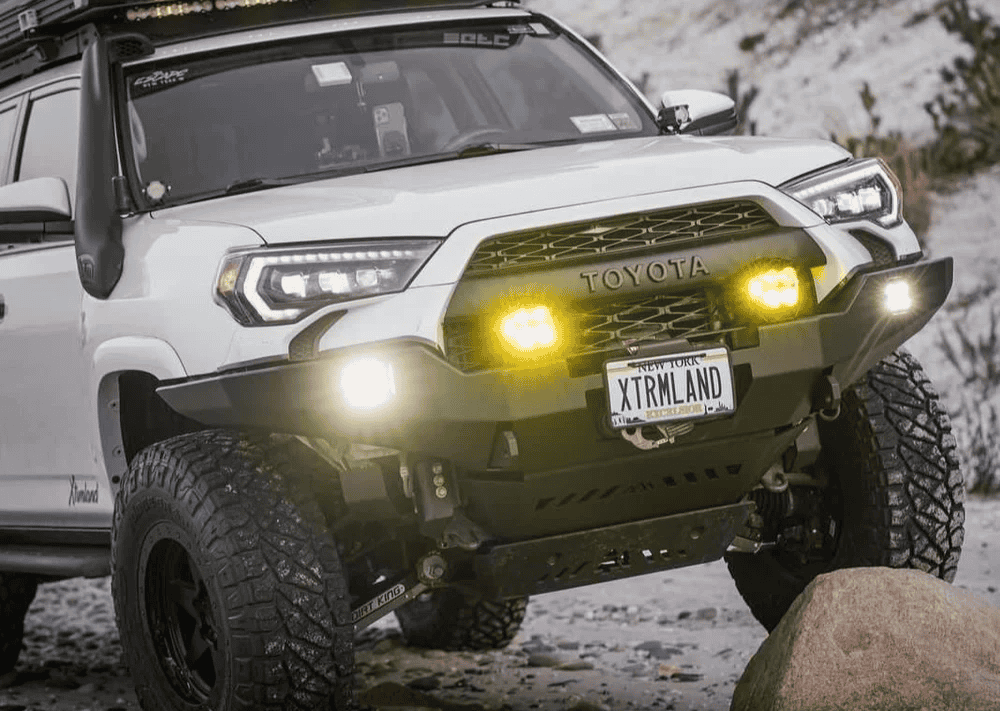Overland Vehicles

A lightweight overland truck is not bare bones. It is intentional. Every pound you add must earn its place by improving safety, self sufficiency, or comfort without compromising range and handling. Lighter builds accelerate better, brake sooner, and put less strain on wheel bearings, shocks, and steering. They also float over washboard and soft sand with more control.
Start by understanding three numbers: curb weight, gross vehicle weight rating, and axle ratings front and rear. Subtract curb from gross and you have payload. That payload needs to cover people, fuel and water, food, tools, recovery gear, shelter, and accessories. Track it like a budget. When you are out of payload, you are done adding gear.
Materials matter. Aluminum, advanced composites, and thin wall steel where appropriate can drop dozens of pounds across armor, racks, and storage. Choose modular systems that accomplish more than one task, such as a bed platform that houses drawers and power while also anchoring tie downs.
The fastest way to add weight is tires and wheels. Upsizing pays off in clearance and durability but creates a cascading effect on unsprung mass, braking distance, and fuel use. Pick a tire that matches your terrain, not a trophy truck fantasy. Many mid size platforms shine on a tire near thirty three inches with a wheel that is as light as possible while meeting load specs.
Suspension is not just lift height. Shocks with correct valving and spring rates tuned for your actual loaded weight will ride better than overspec hardware. Avoid heavy spacers and unnecessary steel where aluminum control arms or lighter components meet the same duty cycle. A light but strong wheel paired with an all terrain tire often weighs far less than an aggressive mud tire, and rolls easier over long highway approaches.
Shelter adds up quickly. A compact hard shell rooftop tent often weighs less than soft shell alternatives and deploys faster. Ground tents save even more weight and can be smarter for solo travel. Inside the bed or canopy, choose drawer systems that use honeycomb panels or aluminum extrusions rather than thick plywood. Use soft bags for clothing and compressible kitchen kits to eliminate heavy totes.
Electrical systems are a classic place to save. Lithium batteries offer more usable capacity at a fraction of the weight of lead acid. A compact DC to DC charger paired with solar keeps systems topped without oversizing. Mount only the recovery gear you need: a quality shovel, traction boards, a kinetic rope, and a smart jack solution. If a winch fits your use case, pick the lightest line and synthetic rope rated for your platform.
Put weight where the truck can handle it. Keep heavy items low and within the wheelbase. Avoid tail heavy builds that overload the rear axle and unweight the steering on climbs. Balance side to side by mirroring storage and water placement. Verify tire load index supports your fully loaded rig and set pressures based on actual scale numbers, not guesses.
Braking and cooling deserve attention in any lightweight plan. Fresh pads, quality rotors, and proper brake fluid make real differences in mountain descents. On long desert pushes, engine and transmission cooling keep temps in check when the truck is loaded and the air is hot. Aerodynamics count too. A slim rack, a low profile tent, and tidy exterior mounts reduce drag and noise.
Pack lists should be seasonal and trip specific. You do not need snow chains in a summer desert loop or a heavy down jacket in the bayou. Pre trip checks keep you from carrying duplicates or broken tools. Weigh the rig at a public scale with a full tank, water aboard, and your normal crew. Note axle splits and keep a running log so each upgrade decision is grounded in data.
Light but capable does not mean fragile. You can still protect key areas with targeted armor. Skid plates for engine, transmission, and transfer case, a lighter aluminum front bumper with recovery points, and frame tied rock rails cover most trail hazards without turning the truck into a tank. The art is using protection where it pays the highest dividend for your routes.
When you choose components, look for gear that multitasks. A tailgate cutting surface that doubles as a table, a water tank that also stabilizes weight forward of the axle, and a canopy that integrates ventilation and lighting all reduce the need for extra items. Simpler trucks are easier to live with on the road and easier to service far from home.
Lightweight builds also reduce environmental impact. Less wheelspin, less rutting, and more precise driving keeps trails healthy. You will find that a balanced truck encourages smoother lines and fewer throttle stabs, which saves fuel and parts while keeping the experience relaxed.
Now, if you want this approach executed without guesswork, a professional plan helps. OZK Customs focuses on balanced, purpose built rigs that respect payload and travel style. Explore our approach to overland platforms here: Explore overland rigs. If you have a truck and want a focused transformation, see what a tailored package looks like: Custom overland upfit. Curious how we work and why travelers trust us with long range builds? Read this overview: Why choose OZK Customs.
Tell us where you drive, how many nights you camp, and what you must power. We will map your payload, right size the gear, and deliver a lightweight overland truck that feels planted on the highway and confident on the trail. When the plan is clean, the miles come easy.
Ready for a purpose built, lightweight rig that still hits your comfort list? Share your trip goals and must haves. OZK Customs will engineer an overland truck with the right weight plan, power system, storage, and protection so you drive farther with less stress on the chassis. Tell us how you travel and we will build the truck that fits.
ADDRESS:
6159 E Huntsville Rd, Fayetteville, AR 72701
PHONE:
(479) 326-9200
EMAIL:
info@ozkvans.com